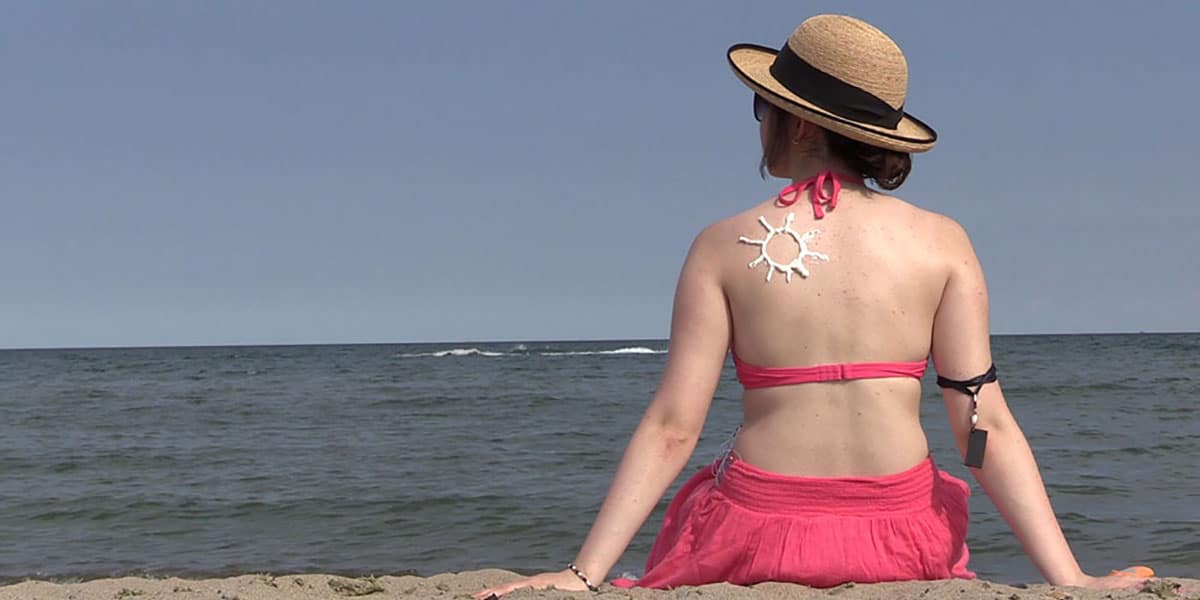Exposing your skin to the sun means exposing your skin to UV radiation. Most of us have probably been warned about the negative implications of UV overexposure – sunburns, skin cancer, and premature aging are things nobody wants to experience. Maybe you’ve already experienced them. But unless you spend your life indoors, some sun exposure is inevitable, and it’s important to use sunscreen to avoid the negative consequences that can stem from enjoying time in the sun.
You probably know that SPF is related to the “strength” of your sunscreen, but have you ever wondered what that really means? SPF, or Sun Protection Factor, is a number assigned to sunscreens that indicates the amount of protection they provide against UVB radiation (the type that causes sunburns). SPF 30 sunscreen blocks out 96.7% of UVB radiation, while SPF 50 blocks out 98%¹. For sunscreens with SPFs higher than 50, the additional protection offered is negligible².

According to the FDA, SPF describes the amount of UV exposure required to cause a sunburn on sunscreen-protected skin, compared to unprotected skin. However, the FDA warns that the amount of UV exposure isn’t the amount of time spent in the sun. The UV index fluctuates over time, and so will your UV exposure³. Still, after two hours, sunscreens become ineffective no matter how high the SPF is⁴. Reapplying your sunscreen every two hours is just as important as remembering to apply it in the first place!
The SPFs of sunscreens are experimentally determined by FDA scientists. They apply 2mg of sunscreen per cm² to the skin of human subjects, using a finger cot to ensure an even application. Then, they shine artificial UV radiation on the skin to determine the amount required to produce a sunburn. Finally, an SPF is assigned. To be water resistant, the sunscreen has to withstand 4 water immersion periods of 20 minutes, with drying periods of 15 minutes in between immersion periods⁵. Like any scientific experiment, the process of determining SPF is quite meticulous. Unless you apply sunscreen like an FDA scientist in your everyday life (which you should), chances are you’re not getting the full marketed SPF. Dr. Wang of the Skin Cancer Foundation says most people are only getting a third of what’s written on the bottle⁶.
You may be wondering about UVA radiation (the type that causes photoaging). The FDA measures a sunscreen’s ability to protect against UVA radiation using a broad spectrum test, which doesn’t involve human subjects. Scientists look for what’s called the critical wavelength of the sunscreen. If the critical wavelength falls within a certain category, the sunscreen passes the broad spectrum test, and can be marketed as such. Broad spectrum sunscreens protect against both UVA and UVB radiation⁵.Sources:
- Cancer Council Australia. (2016). SPF50+ sunscreen. Retrieved June 16, 2016
- United States Environmental Protection Agency. (2006). Sunscreen: The Burning Facts. Retrieved June 16, 2016
- U.S. Food and Drug Administration. (2015). Sunburn Protection Factor (SPF). Retrieved June 10, 2016
- Skin Cancer Foundation. (2012). Sunscreens Explained. Retrieved June 10, 2016
- Department of Health and Human Services, Food and Drug Administration, United States Federal Register. (2011). Labeling and Effectiveness Testing; Sunscreen Drug Products for Over-the-Counter Human Use. 76(117): VI-VIII. Retrieved June 16, 2016
- Wang, S.Q. (n.d.). ASK THE EXPERT: Does a higher-SPF (sun protection factor) sunscreen always protect your skin better? Retrieved June 10, 2016



